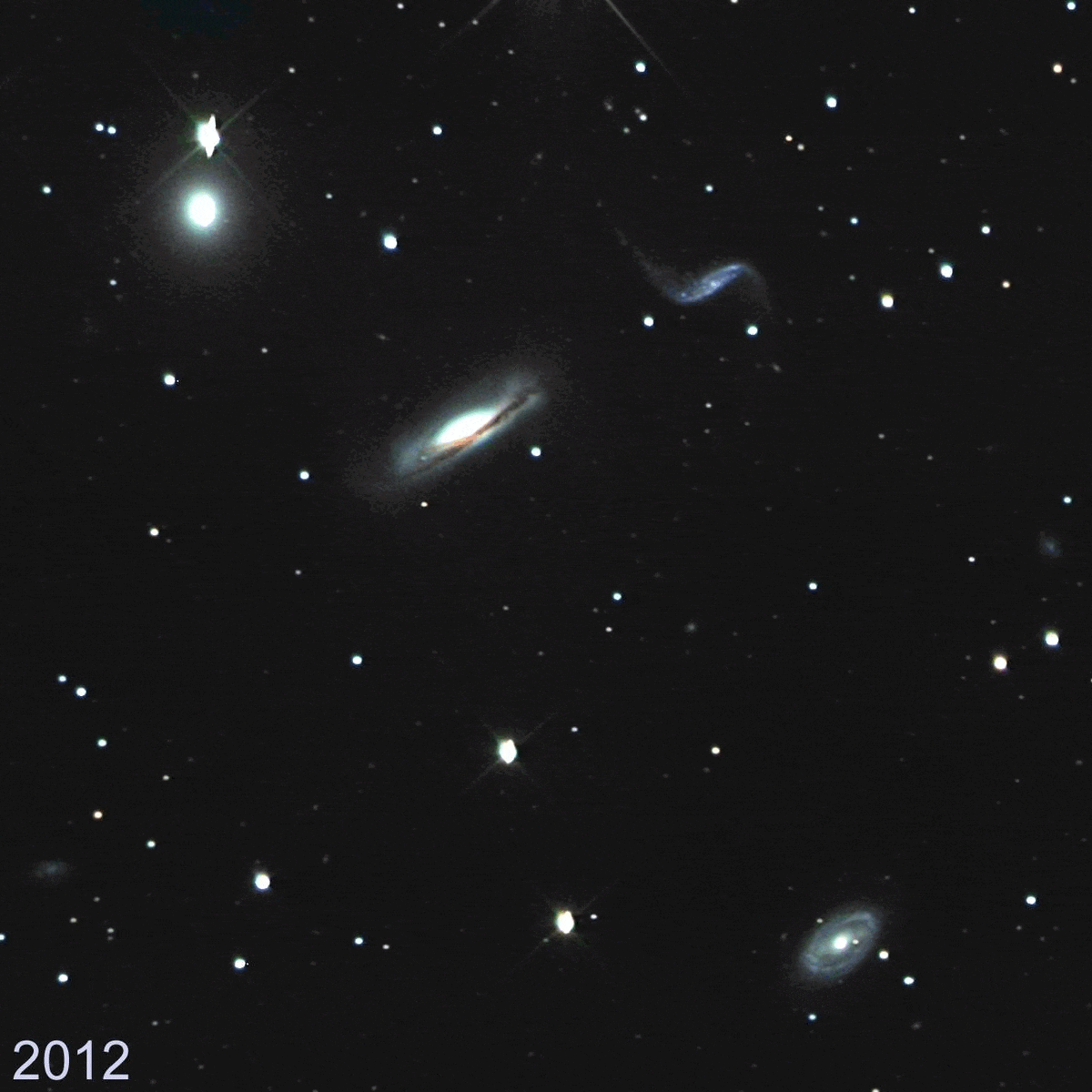Detectable Star Proper Motion
(Hickson 44 galaxy group 10h18m +21°50')
| Upon comparing two image stacks, one dating April 2012 and the other a more recent one of March 2022, I noticed a pair of stars
that clearly had moved in southern direction: See the two stars in the upper right corner of the two image stacks in the gif below.
On closer inspection a third one can be seen in the lower left corner. (Click on the image for a larger view.)
|
| Never expecting the so-called star proper motion
to be that easily observable, I checked the position of these same stars in a photograph that appeared in the 1998 edition of Volume 2 of "The Night Sky Observers Guide"
confirming their proper motion. In the gif below I've combined a detail of that photograph with the same detail of the 2012 and 2022 image stacks.
|

| I have to thank my former colleague Hugo Kok for pointing out the Gaia site and its usage to find the pair of stars.
On this site, you can either select a nearby object (such as NGC3190 in the middle) or enter an RA and declination, and a radius around that location to search for stars that fit
the 'Extra Conditions'. These condition are, for instance, minimum magnitude or proper motion or any other property of the stars to be queried. In the 'Display Columns' these same properties
are mentioned and can be selected for display.
|

| Click the 'Submit Query' button and a list of stars is presented that fullfill these conditions. I already knew what to search for and limited the magnitude of the stars
to within the 15..17 range and set the minimum proper motion to 100 mas/yr (milli-arcseconds/year). As a result only the two magnitude 16 stars in the upper right circle and the magnitude 17 star
in the lower right circle of the gif at the top of this page result. The two stars have a proper motion of 310 mas/yr, mainly in the negative declination direction (pmdec). Their separation is 16 arcseconds and in the last 10 years they have moved by 3.1 arcseconds. They also have an approximately equal parallax of 5.01 mas, corresponding to a distance of ~650 light years. The small difference in parallax (5.067 and 5.012) still accounts for a separation along the line of sight of 7 light years. Against the heavenly backdrop the 16 arcseconds separation translates to only 0.05 light years. The other star has a paralax of 2.00 mas and thus is at a distance of 1630 light years. |

